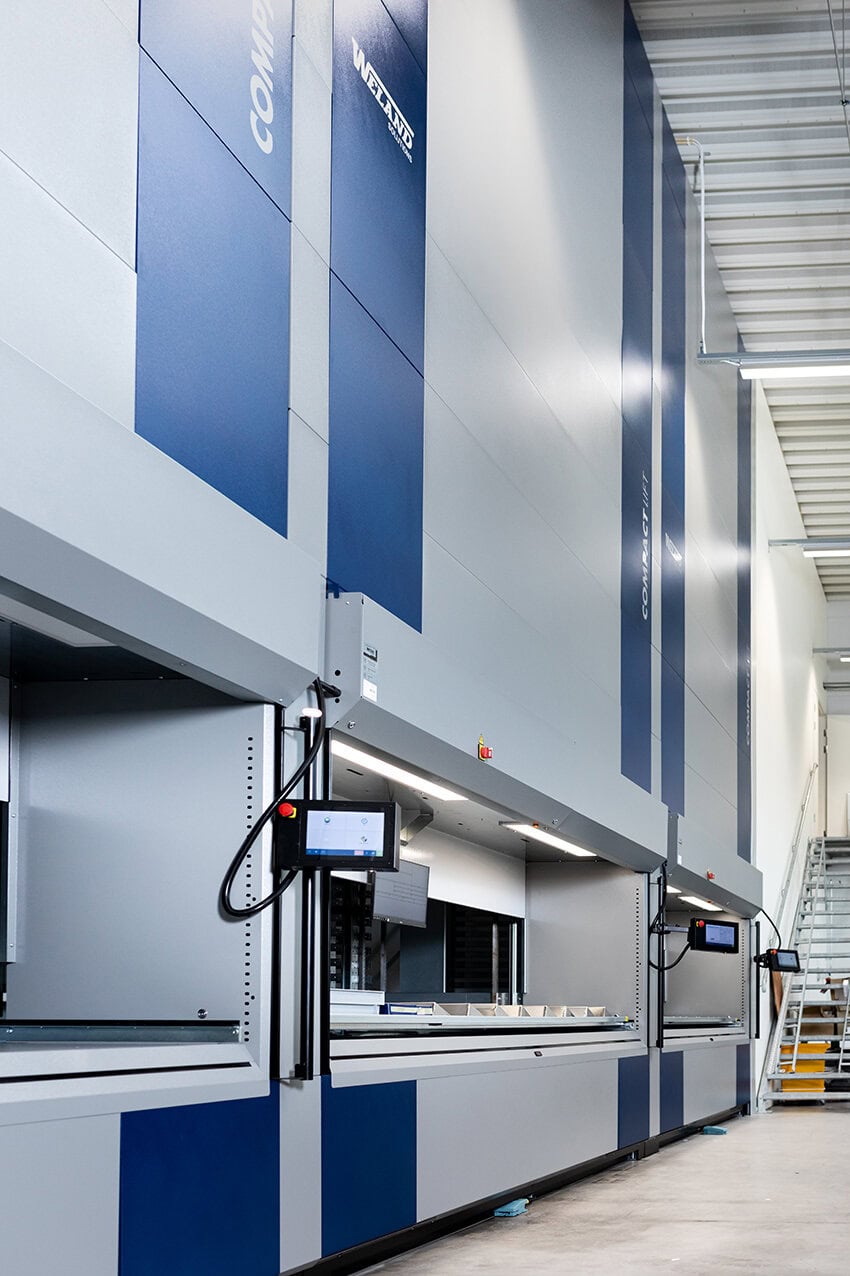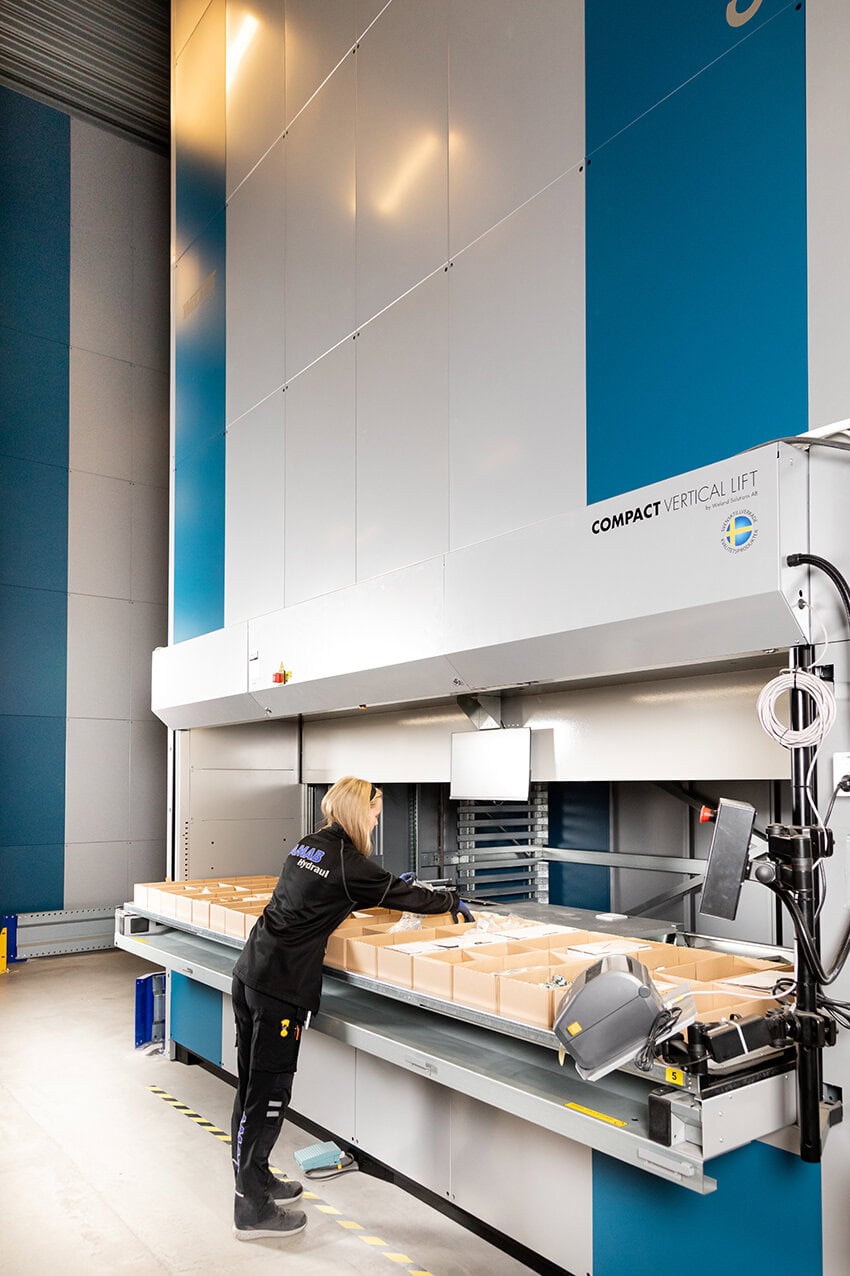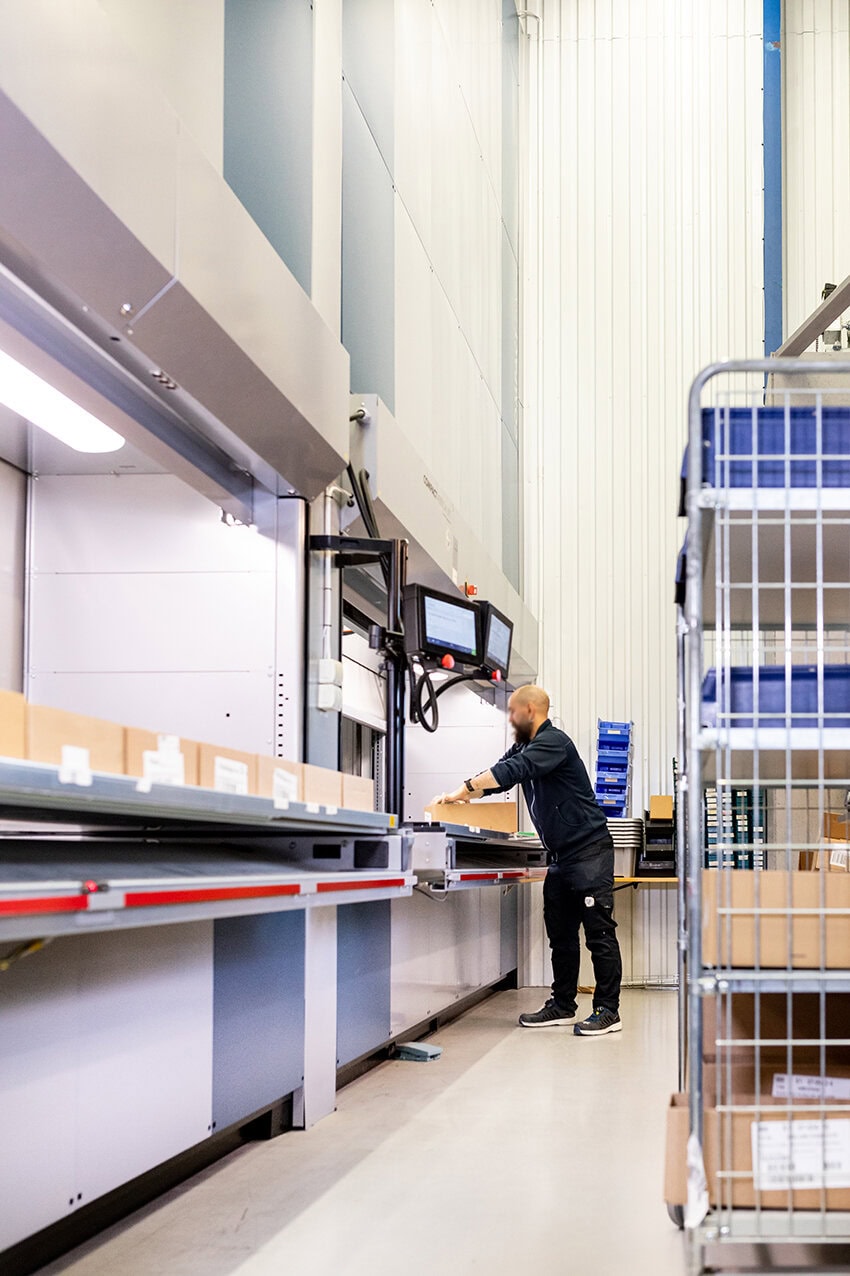(Updated & Expanded Guide)
When evaluating a Vertical Lift Module (VLM), most operations leaders need to understand three things up front: how much does one cost, what drives that cost, and what return can it deliver? Because VLMs dramatically improve floor-space utilization, accuracy, security, and picking speed, they typically pay for themselves quickly—but total cost depends on several design and performance factors.
This updated guide breaks down the pricing variables, average cost ranges, and ROI considerations so you can confidently plan your investment.
Key Factors That Influence VLM Cost
1. Machine Size & Dimensions
VLM pricing starts with its physical specifications. The larger the unit—and the more customized its dimensions—the higher the material, engineering, and installation cost.

Tray Width
White Systems VLMs are primarily sized by tray width:
- Common widths: 96″, 120″, 144″
- Available range: ~3 ft to 21 ft
- The total machine footprint is slightly wider than the tray to allow for smooth in/out travel.
Tray Load Capacity
Each tray is engineered for the load you need to store:
- Standard tray capacities: 660 lb up to 3,300 lb
- Custom trays available for heavier loads
- System capacity: up to 110 tons
Height & Depth
- Standard heights: 9.8 – 52 feet in increments of 5.9 inches
- Custom heights can be built to match your facility’s ceiling
- Standard tray depth: 32 or 48 inches
- Total system depth (tray + elevator clearance): typically ~10 ft for a two-tray VLM
- Custom narrow-depth units are available for constrained spaces
Want to see how machine size affects cost?
2. Features & Functionality
Every White VLM includes core features such as touchscreen controls, safety curtains, LED guidance, and a precision elevator system. Costs vary depending on how advanced your workflow needs to be.
Optional Features That Affect Price
- Tray weight measurement (5–10% accuracy standard; high-precision upgrades available)
- Pick-to-light systems: ~$1,000 each
- Barcode scanners, printers, labelers
- Laser pointers or LED bars
- Advanced software modules
- Integrated software ranges widely: $5,000 → $100,000+ depending on connectivity, WMS/ERP integration, lot tracking, and configuration complexity.
These options directly influence throughput, productivity, and ROI—so many customers justify additional capability by running an ROI scenario during the purchasing process.

Average Vertical Lift Module Cost Ranges

Actual pricing depends on size, configuration, and performance requirements, but most operations evaluate VLMs by model family.
Single Tray Elevator – Compact VLM
- Starting around $90,000+
- Presents one tray at a time
- Cost varies based on dimensions, capacity, and options
- Includes installation fees
Twin Tray Elevator – Compact Twin VLM
- Typically $15,000 more than Compact Lift
- Features a dual-tray elevator for close to twice the speed
- Improves throughput by allowing the next tray to queue while the first is being picked
- Ideal for high-volume parts operations
Double Capacity with Twin Tray Elevator – Compact Double VLM
- Storage capacity of 2 like-sized lifts at about 65% of the price
- Holds four trays per layer
- Presents two trays at a time (slower than Twin but double the storage density)
- Most cost-efficient per cubic foot of storage
Frequently Asked Questions
How do companies usually compare VLM costs?
Costs are often expressed as:
- Cost per stored unit
- Cost per square foot or cubic foot of usable storage
- Cost per pick or presentation
- Cost per labor hour eliminated or repurposed
With rising labor costs, picks per hour has become the dominant metric for cost justification.
What costs should be included when calculating ROI?
For a true ROI model, include:
- Acquisition cost
- Installation & shipping
- Software
- Maintenance
- Operator training
- Annual service or preventative maintenance plans
Many customers see ROI within 12 months due to labor savings and reclaimed floor space.
What maintenance costs should I expect?
Maintenance depends on the drive system:
- Belt drives: periodic replacement
- Chain drives: inspection, lubrication, occasional adjustment
- 4-Point metal rack & pinion: minimal wear, yearly lube recommended
- Drive wheels: may require replacement depending on usage
White Systems also offers preventative maintenance packages to maintain uptime.
How much faster is a two tray elevator compared to a single tray elevator?
- Typical VLM (single lift): ~45–60 seconds/tray for batch picking
- Twin Lift: 30–40% more trays per hour
This gap widens in high-volume environments.
Are there specialty VLMs for heavy or oversized items?
Yes. White builds:
-
Heavy-duty VLMs with up to 3,000 lb trays
-
Systems capable of storing 220,000 lb total load
-
Wide-body units, 12 ft+ for long items: pipe, extrusions, motors, dies, molds, etc.
Ready to Get Pricing for Your Facility?
Every VLM is engineered around your inventory, throughput goals, and available floor/vertical space.
👉 Contact our sales team for a custom quote
👉 Talk to a sales engineer about your layout and workflow
👉 Build a VLM online using our configurator

